Have Questions or Comments? Please ask your questions in the comments section below. We attempt to respond to ALL questions or comments.
Geographic Farming – How to Make Real Money – Part 1
GeoFarming
Caroline: Hi, I’m Caroline Springer. Welcome. This is the next session of Get Sellers Calling You with Beatty Carmichael. Beatty is the CEO of Master Grabber and the creator of Agent Dominator. He is also one of the top marketing experts in the real estate field. Today we are going to be talking about geographic farming and how to really make it profitable for your business. Just a reminder for those of you on our live call, we have the lines muted but will open them up for questions and answers at the end of the call. Welcome Beatty. I’m excited to hear your thoughts.
Beatty: I’m excited to actually hear these thoughts too. We’ll see how it goes.
Caroline: Well, I have a lot of faith because I know you’ve had a lot of experience in this area and really helped a lot of clients be successful with geographic farming and I know that it’s something that either people have had great success with or struggled to find that success. So I think there is a lot of great wisdom that you can share on this with our listeners.
Beatty: Well, good. I hope so. It seems that there are a lot of agents who love the idea of geographic farming and as I talk to them, most of them don’t really understand it. I remember, years back, I was listening to a very wealthy businessman speak and he was sharing a story. He was in a taxi in New York City driving down the road with the taxi cab driver and he looks up in the front seat and the driver has all these books on economics and business. It’s book after book after book. So the taxi driver starts talking to him and picking his brain because he looks wealthy. He’s wearing a $50,000 Rolex watch and this is back in the 1980s, back when that was a lot of money. It’s a lot today but it was a lot more back then.
The taxi driver is talking to him and pumping him for information. The net of the story of what is going on is, this taxi driver owns his own taxi. He owns five other taxis that people are driving. And he’s asking the business owner where he should invest his money. All of these books are about investing and things of that sort. And the business owner made a great comment, “You keep investing in yourself until you reach the point of diminishing returns before you invest anywhere else, because that is going to be your greatest return.” The other thing he commented on is when you do invest outside of yourself, you always invest in something you are knowledgeable about because if you have no clue about it, then you are likely going to lose your money.
How that relates to geographic farming is that a lot of agents have no real clue about geographic farming. So they go out and they invest in it. They take their hard-earned money and they invest money in geographic farming and it doesn’t really work. Not only because they don’t know what they are doing, but also because they don’t know how to invest or how much. I get the impression in talking with a lot of agents that when they invested in geographic farming, kind of what they do is they are sticking their toe in the water, so to speak, and expecting they can swim without any lessons. And they go, “Oh, this is cold water” and they pull their foot back out and that is their experience with geographic farming. Hopefully this call and the series of calls will kind of open up the understanding of geographic farming. It’s really not a mystery, but there are a few details that allow you to be successful with it.
Caroline: Well, I think that makes a lot of sense. It seems like something that would be, not self-explanatory, but here is a farm that I would love to mail to and so it makes sense that a lot of agents would just jump in. So, like you said, I know that some of these things are not rocket science, but a few of these points will be informative and maybe introduce things that some of our realtors haven’t thought of before. Maybe even just small changes to the way that they mail to a geographic farm and that they could see a really big impact in the rate of return from doing these small things.
If you want to start, I would love to hear. I don’t know if you have a synopsis of everything or if you want to dig right into details.
Beatty: Because there is so much, there is absolutely no way to cover geographic farming in a 30 minute call. What I’d like to do maybe on this call is do Geographic Farming 101. This is a survey course like in college. You just take this survey course and then you figure out if you really want to go deeper. What I’d like to do is just maybe do a survey of the lay of the land of how you do geographic farming at a 30,000 foot elevation so you can kind of see all the pieces. Then maybe over subsequent calls, we can dig into each of those topics. Does that work with you?
Caroline: Yes, that works. I love that idea. Because, like you said, there is a lot of great content for us to dig into. I think it’s a great idea to kind of start with that and then we can go from there into more details on future calls.
Beatty: Perfect. You made an interesting comment that I want to come back to because it is actually the number 1 thing: The neighborhood that an agent wants to farm. Here is the big challenge. The first thing about geographic farming is where do you farm? A lot of agents want to farm where they want to farm. The most important thing is to farm where you will make money.
There are two ways of doing geographic farming. You do it as a business, which is all about making the most money for the least amount of investment. Or you do it on emotion, which is all about saying, “I want to be in this area and I’m just going to pick that area.” Which do you think is the better route to go? This is not a trick question, but let’s just get the question out. Is it better to invest where you are going to make the most money or are you going to invest in where you just want to be?
Caroline: I know it’s not a trick question. I think it would be wisest to invest where you are going to have your biggest returns versus where you just naturally want to be.
Beatty: Okay, so then the second question is this. You are a real estate agent and you have all these little areas that you sell in. Do you just pick the one that you think is going to give you the biggest return or do you just pick the one with the highest sales price? What do you think is probably the way to pick the right farm?
Caroline: I think it seems more appealing to pick the higher priced homes. But again, there are probably other ones that would probably have a higher return rate, so that makes more sense to me to start there instead of going to the highest priced homes.
Beatty: So generally speaking, let me share this. When we do geographic farming for our clients, the question always comes up, “Where do I farm?” The simple answer is, “You farm where there is the highest turnover rate.” Now, when we get into how to pick a farm, we will go into six or seven things you can look at to really get the best bang for the buck. But, at a high level, the area you target is generally an area that has a higher turnover. A higher turnover means that there are more sales per home than somewhere else. An easy way to kind of understand it is, if you have two neighborhoods and each have 500 homes. In one neighborhood, last year, 10 homes sold. In the other neighborhood, last year, 50 homes sold. Out of those two neighborhoods, which one do you think would be the better one to target?
Caroline: I would think the one with more sales.
Beatty: So the one with more sales per home? That has higher turnover. What that means is you have 50 chances of picking up a sale in the second one, but only 10 changes of picking up a sale on the first one. Let’s go with the one that has 5X more chances of getting a sale. So that’s the first step. You have to get your emotions out of it. You have to say, this is a business deal. I’m not going to farm where I emotionally want to be. I’m going to farm where I’m more likely to make the most money.
These are kind of the two top things to look at when you are choosing a farm. One is the turnover rate. A lot of people ask, “How do you determine turnover rate?” We’ll go into that on another call, but here is a simple way to determine it. You can always ask your broker and they will explain the formula. But if you take your MLS and you just look at total number of homes sold in the last 12 months, it’s basically what I call a heat map. You just see all the little dots of homes that have sold in 12 months. You typically want to farm where there is a larger concentration of lots of dots. All else being equal that will kind of give you where the higher turnover rate is.
The second thing is, before you start investing in a farm, you want to make sure that there is no dominant agent there. So let’s see if this makes sense. I have two farms. They are both 500 homes. They both had 50 sales in the last year. One farm, the number 1 selling agent in terms of listing agents had 5 of those 50 sales. Then, in another farm, the number 1 selling agent had 30 of those 50 sales. Out of that, which one of those farms do you think would be best for you to target? The first one or the second one?
Caroline: Obviously the first one.
Beatty: Why?
Caroline: To me, the first farm doesn’t show that there is a dominance of one agent there. The other farm is a perfect example of if someone can have 30 of 50 sales, then I want to be that agent that has 30 of those 50 sales. Maybe I can make that happen in this other farm where there is not already a dominate agent.
Beatty: Yes. So let’s talk about competition. Your competition is the mind of that homeowner. So if you have that neighborhood where 30 of 50 sales went to one agent, that means that that agent is so indelibly impressed in those homeowners’ minds that you are going to have a huge job just knocking him or her off that pedestal before you can even go after the sales. So in reality, out of those 50 sales, where the agent had 30 of them, you really only have about 20 sales that you can go after because she controls everything else. However, in the first farm, where the number one agent only had 5 out of those 50, then that means that no one has really any predetermined mindset with one agent over the other. So now, it’s mostly open game. There is no competition there. That’s essentially what that means. So, you want to go where you have the highest turnover and not enough competition that you need to worry about. So that is the first step in choosing a farm. Any questions on that before we go into the next thing on what to do with farming?
Caroline: I don’t think so. Should agents maybe try to target a sales price within a farm, because you did mention before that it would probably be a natural place for agents to naturally want to target to high priced home. If they have the right farm and the selection is there, could they still target the higher priced homes within that correct farm?
Beatty: Great question. That is actually the second step in farming. Now we are going to talk about, “What is the list? Who do you target?” So there are several lines of thought in farming, but keeping this simple as that big picture overview, you can either go after the entire list, all 500 homes, or you can pull out the price points that are most likely to sell. There are pros and cons on both sides. But the reality is, if, out of that 500 homes, you have a range of price points, but there is a common price point range that has the majority of the sales, maybe 35 or 40 of those 50 sales were all in this one sliver of price point, then it makes a lot more sense just to pull out all the homes in that farm that are in that price range and only target those homes, because these are the ones that are most likely to sell. Does that make sense?
Caroline: Absolutely. That is what I think would be a natural thing that an agent would want to think about or naturally that they would want to target, so that makes perfect sense.
Beatty: You are going to lose sales over time. And the cost per marketing per address to grab a sale over time is very miniscule in terms of what you ultimately earn out of that sale. But, in just getting started, then definitely I would focus on that price range where you have the most activity. So let’s say you take that 500 home territory. 50 homes are selling every year. Then we find that there are only 250 homes that are in the price point where 35 sales occurred. So now we have eliminated half of the territory, but we still have 70% of all the sales which means that within that group of price point that you selected, you now have a higher increase in turnover rate. I may be confusing you. Let me just talk in turnover numbers really quickly.
So, 50 sales out of 500 is 10%. Do you follow that math?
Caroline: Yes.
Beatty: That is technically the turnover rate of that territory. But if we can go down to 250 homes and out of those 250 homes that meet that price point, there were 35 sales, then simply all I do is take 35 divided by 250. That means I’m now at a 14% turnover rate. I just increased my turnover rate to the group I’m targeting by 40% simply by going after that. What that means in dollar and cents is, I’m going to be able to spend less money and get more money back in return than I would have done going after the entire farm. The whole idea of pulling out a sliver of the farm is really perfect. It’s not something to follow up on year after year. But getting started, it’s the most economical way.
So now we are selecting the farm and we do that by looking at the turnover rate and making sure there is no real dominate agent. Then the second step we are going to do, we are going to look at what price point is selling the most and pull out those addresses and target those. Then the third thing, and this is real important, is what do you do? How frequently do you touch them? What type of touches do you do? The most important thing is let’s probably go back and say, “What should your expectations be?” This is where most agents end up probably failing in geographic farming because they don’t have any real expectation of what they should do or how long it may take to get results.
I believe it was Tom Ferry and someone was asking him a question. And the question was, “If I’m going to do postcard marketing in a geographic farm, how long do I need to do it? Or, what should I do?” His response was (and it’s online, that’s where I found it): If you are going to do postcard marketing then you have to consistently market with postcards for two or three years before you can expect them to actually remember your name and start calling you. In other words, doing the typical postcard only method that most agents do, it is a two to three year campaign before you get anything out of it. Now most agents don’t do it the way you ought to do it, so that’s probably where a lot of that came from.
So the first step is we have to set the expectations. What should expectations be? And what does it take to accomplish those expectations? Generally speaking, if you are going to focus on a farm, you need to be willing to focus on it for a minimum of a year without expecting any closed transactions. So then really you are investing for the long term in your business. It’s sort of like you are running a business and you are going to make an investment for something that is not going to pay out this year, but next year, because of whatever that investment is. That is geographic farming.
Certainly there are some things you can do and we are going to talk about them as we go deeper. There are things you can do to get a lot more sales. You know it’s not unusual, we’ve had a lot of clients over the years who, in our version of geographic farming, have earned 6 figures in their first year and have made tons of money in their first year. It’s all about how you go about it. At this broad level overview, let’s set the more common expectation that you have to be willing to stay in there at least a year before you get your first client engagement. Because what’s happening is it takes a while for you to get your name in front of those people that they actually start to recognize you and trust you.
Now there are some things I’ll share in just a moment that you can do that will help you get client engagements a little more readily in the first year, but the expectation is, regardless, you set aside the money that you know you can focus on in investing in that farm for a minimum of 12 months without expecting or needing an extra sale from that farm. That’s the expectation and if you can’t do that, don’t go into geographic farming. It’s too early for you. Build up your business. Don’t take your lunch money or your mortgage money and apply it toward geographic farming because it’s a long term payout. When it does pay out, it’s really tremendous but it is long term.
The other expectation goes along side with that and that is what are you doing to touch them and how many touches? And here is what is actually going on that causes the length of time. There are all kinds of studies that we’ve all heard about, but basically they all fall into the similar range that says someone has to see you somewhere between 7 and 12 times before they recognize you. Do you recall those types of studies, Caroline?
Caroline: Yes, absolutely. I’ve seen a study too where even to remember you on a first name basis, I believe it was six times and that doesn’t even mean mailing. Just sending a postcard in the mail doesn’t necessarily equate to six. It could be, like you said, 12 times for someone to remember your face or your name, which is really interesting because I think for a lot of realtors they think in mailing six times, “Oh, now they are going to remember me.” And as we’ve seen, studies show it requires a little more than that.
Beatty: So you’ve got to break through their brain and get them to actually recognize you and remember you because until they recognize and remember you, they will not do business with you. But merely recognizing and remembering you does not mean they are going to do business with you, but that is the first step. And it takes a lot of touches to get there. This is why geographic farming is usually a long term process because you’ve got to break through that barrier of them not knowing who you are. I’ve had other agents say, “Oh, everyone knows me. I’ve got signage all over the place. They see me all of the time.” That may be true, but they don’t really recognize you and remember you. They just are familiar with you so when they see your sign, they go, “Oh yes, I’ve seen that one before.” You still got to touch them in other ways to dig deeper underneath the skin where they actually recognize your name, remember you and begin to trust you more.
Therein lies the challenge. So the question is, are you going to do all of your touches through postcard mailings, which is the typical process in geographic farming, or do you augment those touches through other things? That’s kind of the next step. What are some of those other things? But before we go to the other things, the real question is, how many times a year are you going to be touching them so you can start to drive business from them? 12 times a year isn’t enough. In fact, if you talk to postcard marketers, the mega agents who build their business all from mailing postcards, here’s what they’ve said. We know because we’ve done a study with this. The average says a minimum of 18 mailing a year. The top is somewhere around 24 or 25 mailings. Let’s call it 18 to 24 mailings. Every two to three weeks is kind of the ideal range on geographic farming with postcards. That’s postcards only. But if you can augment it with other touches, you can do two things. You can trim down how many postcards you do and increase the speed in which you start to get transactions.
You want to move into doing some low cost type of touches outside of postcards. We’ll talk about postcards in a moment. But probably the two biggest things that you can do, or the two easiest things you can do, one is door knocking. Just go through the neighborhood and door knock. Just go through the homes that you are targeting and door knock. So if you are only targeting 250, then map them out on a map and go through and door knock on a Saturday morning or a Sunday afternoon. Don’t door knock when people aren’t going to be there. Try to door knock when they are. The goal is simply to go meet people. Go introduce yourself as a realtor. Maybe give them something if you want to. But more importantly, it’s just being out there door knocking, saying hello. You aren’t asking, “Hey, can I sell your home” as much as you are introducing yourself and just being a friend. Because what happens is, once you have door knocked and you have met the person, now you have completely broken through that barrier of they don’t know you. Now they have a face to you, a voice, and a personality. By the way, when you door knock, make sure that you wear your real estate nametag so, as you are talking with them, they will have forgotten your name probably, but they can always read your tag. When they see your name and they are speaking to you, it kind of indelibly imprints it into their memory. So go out and door knock.
The other thing you can do, if there is a Facebook community page, which a lot of neighborhoods have now, find out the Facebook community page and just start plugging in and being active. Show off any listings that you get. Show off any sales. Comment on people’s posts. Be farming the community page and all the things that people are talking about and offer good, valuable suggestions on any questions that they have. In other words, the more you can be in front of them, the more likely you are going to break through that barrier of them not knowing you and remembering you, and the more likely they are now going to start remembering you. Is this making sense to you? Do you have any questions on that?
Caroline: Absolutely. No. I think we’ve said that before. I think any type of personal touch that you can make, whether it is a door knock or anything that seems above and beyond the generic thing that most people receive in their email or in their mailbox. Adding that personal touch increases people’s likelihood of remembering you. That’s not very common these days.
Beatty: Let me share the impact of it. Because this is why it is so important. I have a client of ours who started using us a few years back. He was a nobody. He was a 1500 home farm. His name is Nelson. He lived in that community and he wanted to farm it. He wanted to farm it because he was there. It had a great turnover rate and sales price. So it had all the greats. Everything was good. At the time, he was just a nobody. He had made a few sales and out of 1500 homes there were probably 100 to 110 transactions every year. So he was down on the bottom with just a few of those. He started with us. They had a Facebook community page. He also started to door knock. The Facebook community page only had 200 members on it. He said, well, I need to get that up. So he started to door knock with a flyer that promoted the Facebook community page. So as a real estate agent, he would meet the people. He made a goal to door knock three times that year. He would leave that flyer on their door about the Facebook community page. He would meet people. And then we were doing postcard mailings for him. By the way, he got 800 -1000 of those people on the Facebook community page within a handful of months. So it drove traffic to the community page. He was able to meet people. They appreciated him being there because the flyer he put obviously had his information. And he’s in the mailbox with them as well.
Get this, within 18 months from starting, he controlled 22% of all of the sales in that farm. From almost 0% to 22% of the sales by being active on Facebook, being in the mailbox and door knocking. Then I talked with him recently. He’s now at 50% or 60%. It’s an amazing number. He absolutely owns that farm and that’s all he’s been doing. So the face to face door knocking is important because, if you think about how humans respond, if we meet someone we trust them. In fact, studies have shown that if they’ve met you, they are 8 – 10 more likely to do business with you than if you haven’t met them. So that’s the importance of doing that door knocking.
Caroline: Wow. I think even hearing that statistic, 8 – 10 times, I know everybody knows that that is something that is important and can be a game changer. But even hearing 8 – 10 times, that is huge. Well, I think we are about out of time and need to wrap up.
Beatty: Rats! Because there are a few more things on the overview. By the way, there are 10 different things you can do that cost no money or very little money in touches; we’ll cover that. And then we’ll get into the postcard stuff once we get to that section on how to really touch with postcards.
Caroline: That sounds great. I know there is so much to cover in this. I’m excited to continue. We are about to wrap up. Beatty, thank you so much for your time and expertise in sharing all that you’ve learned with all of your success with geographic farming over the years. I really do think this was a great call. I’m excited to continue on in our series. Before we close out, do you have anything else you would like to share?
Beatty: Yes, I would like to share. What we are going to be teaching on is how to do geographic farming right. But a lot of people just don’t know how to do it. They don’t want to do it and they want help. I’d like to suggest that, if you are looking for help, we can provide it because that is kind of what we do. We have a product we call Agent Dominator, which you can do not only in geographic farming but you also can do within your personal list which is even more profitable. But if you have interest, just go to AgentDominator.net and you can find out about it, request some information and see what we do there.
Caroline: Okay great. Well thank you, Beatty. That’s all we have for today. Thanks again and thank you for sharing.
Beatty: My pleasure and thank you for allowing me to be on my own call.
p014


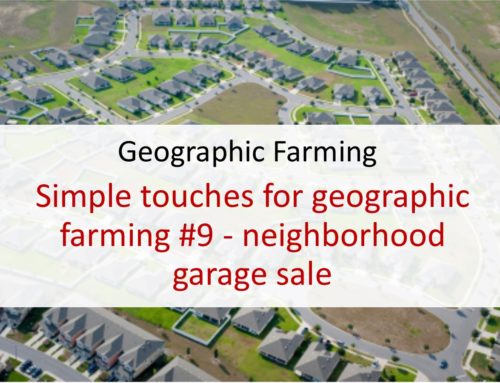
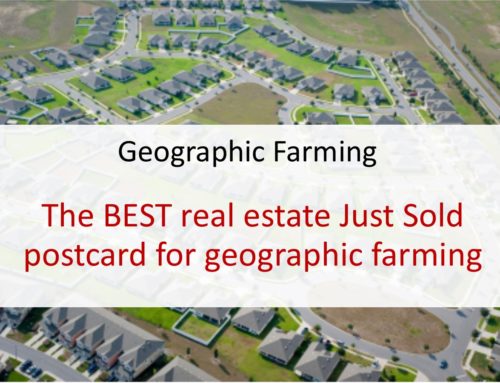
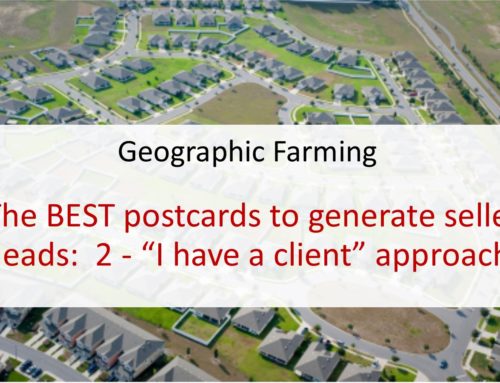
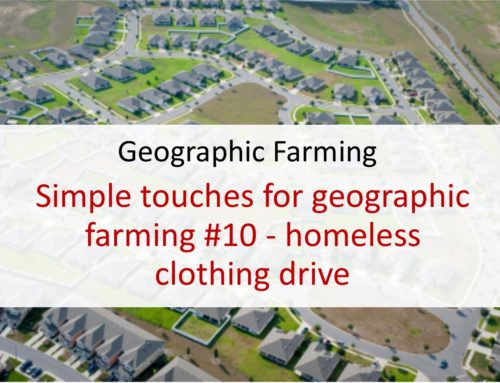
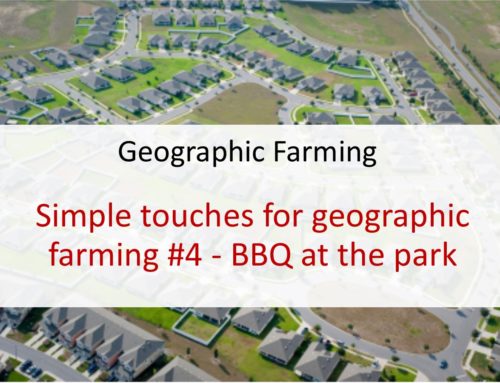

Leave A Comment